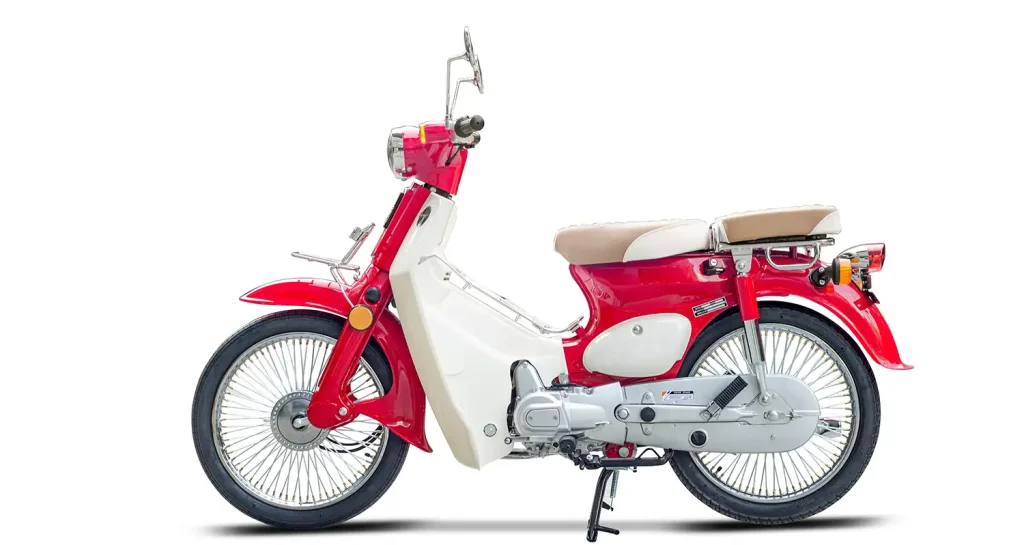Motorcycles have a unique appeal. They’re not just a means of transportation; for many, they symbolize freedom, adventure, and a connection to the road that cars can’t quite replicate. However, the allure of owning a motorcycle often leads prospective buyers to focus solely on the purchase price. What many fail to consider are the hidden costs associated with motorcycle ownership. If you’re thinking about buying a motorcycle, it’s important to understand that the real expenses go far beyond the initial sticker price.
In this blog, we’ll break down the true cost of motorcycle ownership, taking into account factors like maintenance, insurance, safety gear, and other long-term investments that every rider needs to consider.
The Purchase Price: Just the Beginning
The first and most obvious cost is the motorcycle itself. The price of a motorcycle can vary widely, depending on the brand, type (cruiser, sportbike, touring, etc.), and whether it’s new or used. For instance, a new mid-range sportbike may cost anywhere from $8,000 to $15,000, while a premium touring motorcycle can easily exceed $25,000.
However, while this is the most visible cost, it’s really just the starting point. Many new riders make the mistake of thinking that once the bike is paid for, they’re set. In reality, the motorcycle is just one part of a much bigger financial picture.
Insurance Costs: Higher Than You Think
Motorcycle insurance is often more expensive than car insurance, particularly for younger riders or those purchasing high-performance bikes. Factors like your age, riding experience, and the type of bike you own all play into the insurance rate. Sportbikes, which are built for speed, tend to be much more expensive to insure compared to cruisers or standard bikes.
For example, a 25-year-old rider with a clean driving record might pay $500 to $1,200 annually for full coverage, depending on their location and the motorcycle model. This is a recurring cost that needs to be factored into your budget from day one.
Protective Gear: Not Optional
Motorcycle riding involves inherent risks, which makes safety gear an absolute necessity. The importance of quality gear cannot be overstated; it can literally save your life in the event of an accident. So, while gear might feel like an optional expense at first, it is one of the most critical investments you can make as a rider.
Here’s a breakdown of basic protective gear:
Helmet: A high-quality helmet with a DOT or SNELL certification can cost anywhere from $150 to over $800.
Jacket: A motorcycle jacket (either leather or textile) with built-in protection costs between $200 and $500.
Gloves: Proper riding gloves, which provide crucial hand protection, typically range from $50 to $150.
Boots: Motorcycle-specific boots, which protect your ankles and feet, can cost between $100 and $300.
Pants: Motorcycle pants with armor can range from $100 to $400, depending on the material and protection level.
When all is said and done, a full set of quality protective gear could easily set you back $600 to $1,500, depending on your preferences and the level of protection you want.
Maintenance and Repairs: An Ongoing Commitment
Motorcycles require more frequent maintenance than cars, particularly if you ride regularly or use your bike for long distances. Routine services like oil changes, chain lubrication, tire replacement, and brake maintenance can add up quickly.
Let’s look at some common maintenance costs:
Oil Changes: Unlike cars, which often go 5,000 to 7,500 miles between oil changes, motorcycles typically need an oil change every 3,000 to 5,000 miles. This can cost between $50 and $100 each time.
Tires: Motorcycle tires wear out faster than car tires, especially if you ride aggressively. A good set of tires might last 8,000 to 12,000 miles, and a replacement set typically costs $300 to $500.
Chain and Sprocket: If your bike has a chain-driven system, you’ll need to replace both the chain and sprockets every 15,000 to 20,000 miles, costing around $200 to $400.
Brake Pads: These need replacing every 10,000 to 20,000 miles and can cost $150 to $300 for parts and labor.
Even without major repairs, regular maintenance could easily cost you $500 to $1,500 annually, depending on how much you ride and whether you perform some of the work yourself.
Fuel Efficiency: A Small but Regular Expense
Motorcycles are generally more fuel-efficient than cars, but the amount you spend on gas depends on your bike’s engine size and how often you ride. Most motorcycles average between 35 and 60 miles per gallon, but if you ride often or have a high-powered bike, your fuel costs will add up.
For example, if you commute daily on your motorcycle and cover 10,000 miles per year, and your bike gets 45 MPG, you’ll spend about $800 annually on fuel (assuming an average gas price of $4 per gallon). While not a huge cost compared to other expenses, it’s worth including in your overall budget.
Registration and Taxes: Location Matters
Just like with cars, motorcycles are subject to registration fees and taxes. These costs vary significantly depending on where you live. In most states, the annual registration fee for a motorcycle is between $20 and $100. However, some states may also charge additional taxes or fees based on the value of the bike or emissions standards.
For example, if you’re purchasing a brand-new motorcycle in California, you could face registration fees exceeding $100 annually, plus local taxes. On the other hand, in a state like Texas, your registration might be closer to $30 a year.
Storage: Keeping Your Bike Safe
If you don’t have a garage or secure space at home, you might need to factor in storage costs. Motorcycles are often targets for theft, so it’s essential to store them securely, especially in urban areas. Renting a storage unit or garage space can cost anywhere from $50 to $200 per month.
During the winter months, particularly in areas with harsh weather, you may also need to consider long-term storage solutions. Some riders choose to “winterize” their bikes, which involves preparing the motorcycle for months of inactivity, including battery care, fuel treatment, and other necessary precautions.
Depreciation: The Hidden Cost
Like cars, motorcycles depreciate over time, though the rate of depreciation varies by make and model. Sportbikes, for example, tend to depreciate faster than cruisers or touring bikes. This means that if you plan to sell your bike a few years down the line, you might not recoup as much as you had hoped. Depreciation is often an overlooked expense but can significantly impact the total cost of ownership.
Motorcycles offer a thrilling and often more economical way to get around, but it’s crucial to account for the long-term expenses that come with ownership. Beyond the initial purchase price, you’ll need to budget for insurance, gear, maintenance, fuel, registration, and potential storage costs. By understanding the true cost of motorcycle ownership, you’ll be better prepared to enjoy the ride without unexpected financial surprises along the way.

